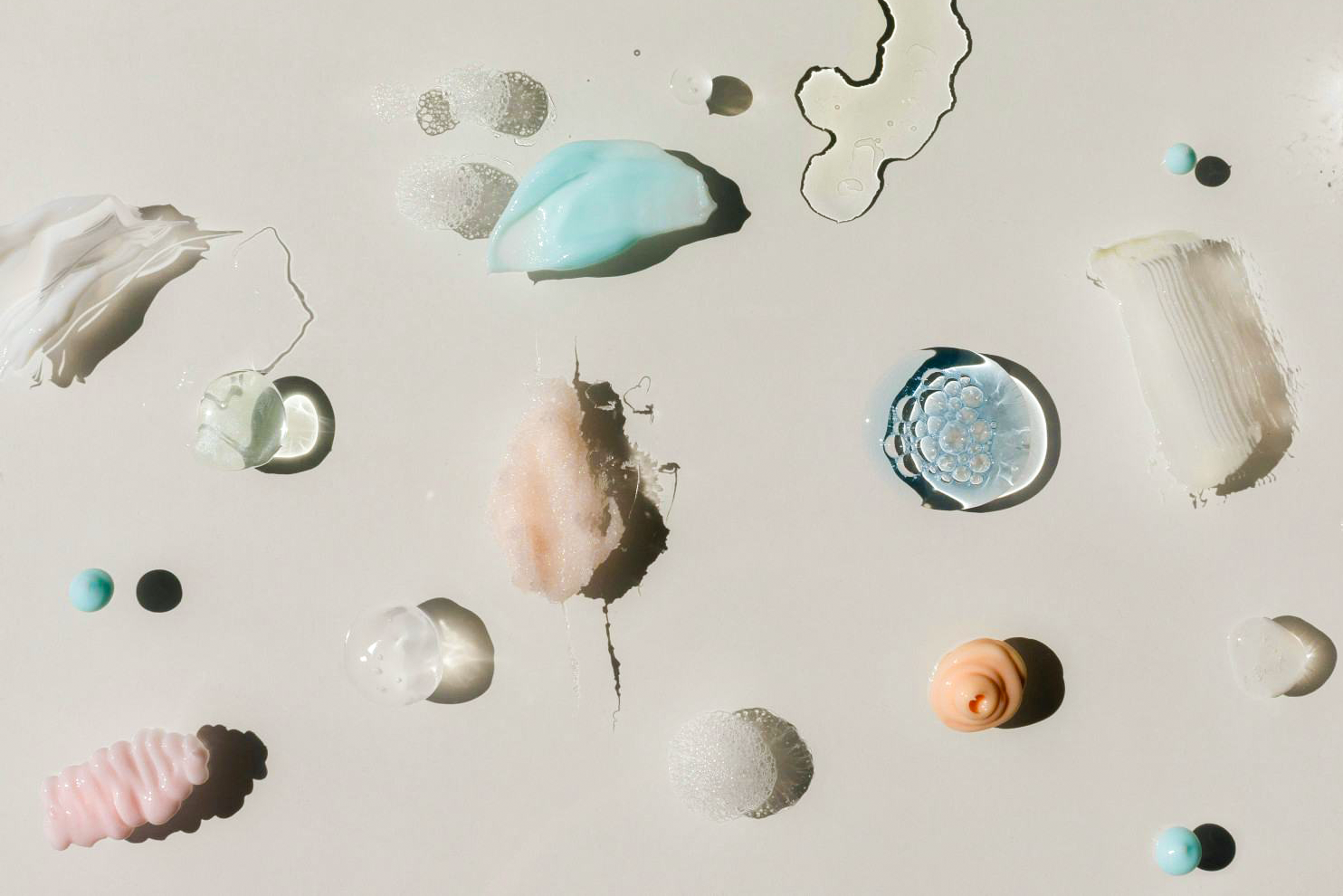Whether it's ten steps or three, you probably already have a skincare routine. Maybe you've carefully formulated it over the years, or you've only just started to find which products work best for you. Whichever it is, do we really know what we're putting on our skin, and the purpose of each step in our routines?
Welcome to The Anatomy of Skincare, where we break down each layer of a typical skincare routine, so that you can craft the perfect routine for you, thoughtfully and with intention.
Adding to Your Routine
Now that we've discussed the more basic steps of a skincare routine, let's dive into some "add-ons" that you can incorporate. You might be feeling overwhelmed with all the options out there and with trying to figure out your optimal routine, but your skin's health is worth the time and effort. We're here to help you every step of the way.
Sunscreen
Sunscreen is definitely one of our non-negotiable add-ons. Although it is already widely-known that exposure to the sun's UV rays can be harmful to the skin, many people still forgo sunscreen in their daily routines.
UV light is divided into three different wavelengths: UVA, UVB, and UVC. UVC is absorbed by our ozone layer, as well as most UVB rays. However, a small amount of UVB rays do reach the surface of the Earth, along with UVA rays, which make up 90% of the UV radiation that we are exposed to. UVB rays are extremely harmful and cause direct damage to our DNA which can lead to skin cancer. UVA rays can also contribute to the development of skin cancer, but because they penetrate deeper, they cause oxidative stress and inflammation, which leads to premature aging and overall degradation of skin health [1, 2].
There is a lot of controversy over whether or not sunscreen prevents the absorption of vitamin D, an essential vitamin. While UVB rays do help the body synthesize vitamin D, sunscreen does not block this process entirely. Dermatologists recommend dietary sources such as fortified dairy and fatty fish, or a simple supplement for those who may be concerned with deficiencies, instead of completely forgoing sun protection. It is ideal to wear sunscreen daily, and take measures to protect yourself from sun exposure, such as by wearing sunglasses or hats. Studies have found that using at least 15 SPF sunscreen daily significantly reduces the risk of melanomas and other skin cancers [2].
Targeted Treatments
Although the term "targeted treatments" can be vague, here we're referring to products outside of the basic routine we discussed, even though those can also target specific skincare concerns. Let's go over a few!
Retinol & Bakuchiol
You probably have heard of retinol before, but may have been wary in adding it to your routine, as it can be quite potent, especially for those with sensitive skin. Retinol, a derivative of vitamin A, has been shown to be effective for anti-aging and revitalization. Retinol works by accelerating cell turnover, meaning it helps the body get rid of older, possibly dead skin cells, and generate new ones faster. This leads to the formation of new collagen for a more healthier, youthful complexion.
However, while retinol does target concerns such as wrinkles and hyperpigmentation, it can have side effects. Many people who try retinol for the first time note that they experience irritation or dryness, but these symptoms can go away once the skin adjusts. Those with more sensitive skin may notice that the side effects are more severe or do not go away [3].
This is where Bakuchiol comes in. Bakuchiol is a plant-derived substance that comes from the Psoralea corylifolia plant. It is known to have similar effects to retinol, but without the adverse side effects, making it perfect for those with more sensitive skin. It also has antioxidant, anti-inflammatory, and antibacterial and antifungal effects, adding to the anti-aging effects from retinol. Bakuchiol is also able to be extract through environmentally-friendly methods [4].
Eye Creams
The skin around the eyes is particularly thinner and more dynamic than the skin on any other part of the body. Because of this, it is more sensitive, making it more susceptible to damage from the sun, pollution, and excessive touch. While many eye creams contain similar ingredients to other products, formulations for eye creams tend to be thicker and more concentrated [5]. If wrinkles or hyperpigmentation around your eyes is a skin concern, it can be a good idea to look into using an eye cream!
Lip Care
The skin on your lips is also quite different from other parts of the body. It is much thinner, but also covered in a different type of skin tissue, which is what makes it look and feel different from other parts of our face or body. Because of its different composition, the skin on the lips is more prone to drying out due to poor barrier function and water retention capabilities [6].
We'll go more into the specifics of lip care products another time (stay tuned!), but for now, we want to mention that your lips also need care that is different from the care you may give to the rest of your skin.
Face Masks
There are many types of face masks out there nowadays, from sheet masks to peel-off masks, to even LED masks. There's been some debate on whether these are really effective or not, but don't worry, we did the research for you!
Like with any product, the ingredients are what's most important. For example, sheet masks can be hydrating if they contain hyaluronic acid, or soothing if they contain tea tree extract. Clay masks can also contain a wide variety of active ingredients, but their clay base makes them great for absorbing excess oil and clearing clogged pores. So does using these ingredients in a mask have any more benefits than using them in other products?
Both yes and no. Often times, using a mask keeps the product on your skin longer, while creating a physical barrier that reduces the chances of evaporation. This can allow your pores to soak up more product. [7]. However, formulations for face masks aren't exactly meant for long-term results, and they are mostly for a temporary boost or an occasional regimen.
How often you should use a face mask depends on your skin type and the product. If you have dry skin, using a hydrating face mask daily along with your normal skincare routine can help boost your skin's hydration. If you have oily or combination skin, you may benefit from using a clay mask, but using it too often can strip too much oil from your skin. Exfoliating masks are beneficial and important for all skin types, but it's not a good idea to exfoliate more than a few times a week, especially if you have sensitive skin [8].
Our Favorite Add-Ons
Here are some of our favorites that we've incorporated into our routines, and we hope you'll be able to too!

We recommend: Lavido Alert Eye Cream
Why we love it: As we mentioned above, the skin around the eyes is much thinner and more sensitive. This formula caters to the sensitive nature of the eyes, and works to hydrate, brighten, and combat wrinkles with luxurious natural ingredients. It uses nutrient-dense hydrosol water combined with plant-based hyaluronic acid, Pomegranate Seed Oil, and Rosehip to create a lightweight cream that has been clinically proven to improve hydration, texture, and firmness.

We recommend: Fitglow Beauty Vita Youth Retinoic Oil
Why we love it: This facial oil contains a Triple Bio-Retinoic Complex, made with Bakuchiol, Hydroxypinacolone, and Rosehip Oil, which gently triggers retinoic acid receptors in the skin without irritation. It deeply hydrates the skin, while providing anti-aging, brightening, and smoothing benefits.

We recommend: Henné Organics Lip Mask
Why we love it: If your lips are in need of deep hydration, this lip mask is the way to go. It contains ingredients such as Sea Buckthorn and Evening Primrose, which restore and soothe your lips. It also has the perfect balance of ingredients to hydrate deeply and lock in moisture.

We recommend: Fitglow Beauty Cloud Collagen Lipstick Balm
Why we love it: This lipstick balm contains hydrating ingredients to soothe dry lips, but also a collagen complex with ceramides and vitamins to protect against environmental pollutants and aging. We love using it on days when we don't need a whole makeup look, but just a pop of color!

We recommend: MiMC Eyelash Care Essence
Why we love it: Your eyelashes need some love too. This nourishing 3-in-1 serum provides intense hydration, strengthening, conditioning, and lasting protection for lashes and lids. Formulated with a powerful blend of Asian herbs, this essence rejuvenates and repairs lashes, and defends them from environmental damage.
This is the last part of our series, The Anatomy of Skincare. Although there is much more to discuss and learn about skincare routines and ingredients, we hope that we were helpful in breaking down the basics and essentials, so that you can approach new products more easily. Stay tuned for more informative posts on Musings by MU New York!
Still have questions or want to learn more? Feel free to reach out to us — we're always here to help!
Sources
1. Shanbhag, S., Nayak, A., Narayan, R., & Nayak, U. Y. (2019). Anti-aging and Sunscreens: Paradigm Shift in Cosmetics. Advanced pharmaceutical bulletin, 9(3), 348–359. https://doi.org/10.15171/apb.2019.042
2. Williams, Sarah. (2025). Sunscreen fact and fiction: What the science says. Stanford Medicine News Center. https://med.stanford.edu/news/insights/2025/06/sunscreen-science.html
3. Quan, T. (2023). Human Skin Aging and the Anti-Aging Properties of Retinol. Biomolecules, 13(11), 1614. https://doi.org/10.3390/biom13111614
4. Mascarenhas-Melo, F., Ribeiro, M.M., Kahkesh, K.H. et al. (2024) Comprehensive review of the skin use of bakuchiol: physicochemical properties, sources, bioactivities, nanotechnology delivery systems, regulatory and toxicological concerns. Phytochem Rev 23, 1377–1413. https://doi.org/10.1007/s11101-024-09926-y
5. Hamie, Hanin BSa; Yassine, Reem BSa; Shoukfeh, Rajaa BSb,*; Turk, Dilara MDc; Huq, Farhan MDc; Moossavi, Meena MD, MPHc. (2024). A review of the efficacy of popular eye cream ingredients. International Journal of Women’s Dermatology 10(2):p e156. https://doi.org/10.1097/JW9.0000000000000156
6. Gunt, H. B., & Ertel, K. (2023). The pH of the lip surface. Skin research and technology : official journal of International Society for Bioengineering and the Skin (ISBS) [and] International Society for Digital Imaging of Skin (ISDIS) [and] International Society for Skin Imaging (ISSI), 29(8), e13438. https://doi.org/10.1111/srt.13438
7. Cleveland Clinic. (2019). Do Face Masks Actually Work or Are They Just a Fad? https://health.clevelandclinic.org/do-face-masks-actually-work-or-are-they-just-a-fad
8. Anderson, Jen. (2020). This Is How Often You Should Use a Face Mask in Your Skin Care Routine. Healthline. https://www.healthline.com/health/beauty-skin-care/how-often-should-you-use-a-face-mask





